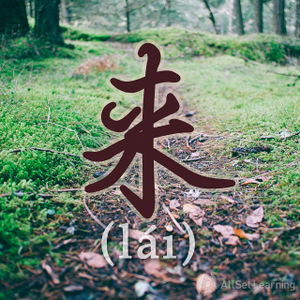Difference between revisions of "Direction complement "-qilai""
| Line 36: | Line 36: | ||
</div> | </div> | ||
| − | |||
| − | |||
| − | |||
| − | |||
| − | |||
| − | |||
| − | |||
| − | |||
| − | |||
| − | |||
| − | |||
| − | |||
| − | |||
| − | |||
| − | |||
| − | |||
| − | |||
| − | |||
| − | |||
{{Basic Grammar|起来|B1|V + 起来|站 <em>起来</em>!说 <em>起来</em> 容易,做 <em>起来</em> 难。|grammar point|ASGBPXOB}} | {{Basic Grammar|起来|B1|V + 起来|站 <em>起来</em>!说 <em>起来</em> 容易,做 <em>起来</em> 难。|grammar point|ASGBPXOB}} | ||
{{Rel char|起}} | {{Rel char|起}} | ||
Revision as of 07:36, 28 March 2016
-
Level
-
Similar to
-
Used for
-
Keywords
起来 (qǐlái) comes up very frequently in Chinese and can be used both literally and figuratively. This is a little like the usage of "up" in English which can be used literally, as in "stand up," or figuratively, as in "add up."
Contents
Expressing an upward movement
起来 can be used to express an upward movement like "up", as in the English examples of "stand up" or "pick up."
- 请 大家 站 起来 。 Please stand up.
- 快 把 地上 的 书 捡 起来。Quickly pick up the books on the floor.
- 你 怎么 不 把 老人 扶 起来。 Why didn't you keep the old man upright?
- 别 动!把 手 举 起来。Don't move! Put your hands up.
- 他 吓 得 头发 都 竖 起来了。He was so scared that his hair stood up.
Expressing an initial judgement
起来 can also be used to express a preliminary judgement. 起来 is used here to express that the speaker has only just initiated an action, and based on that, has made a quick judgement. It is used in the following structure:
Structure
Subj. + Verb + 起来 + Adj.
This expresses that the subject seems adjective when the action of the verb is performed. This structure is frequently used with perception verbs such as 看, 听, 尝 etc.
Examples
- 他 看 起来 很 友好。He looks very friendly.
- 这 件 事情 听 起来 有点 复杂。This matter sounds a little bit complex.
- 你 点 的 菜 尝 起来 不错。The dishes that you ordered tastes good .
- 这 件 衣服 摸 起来 很 舒服。These clothes feel very comfortable.



